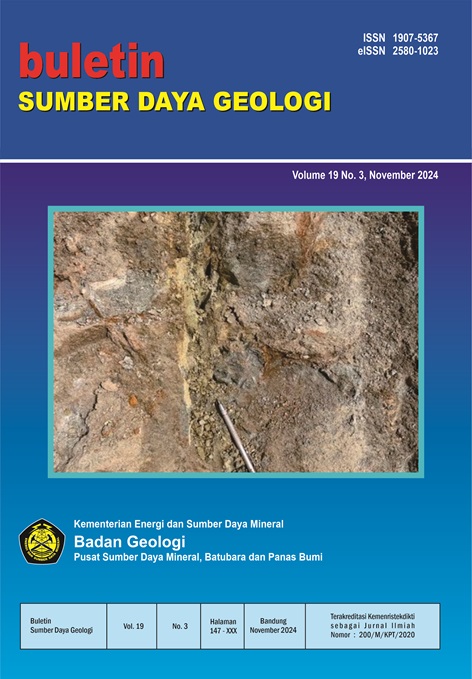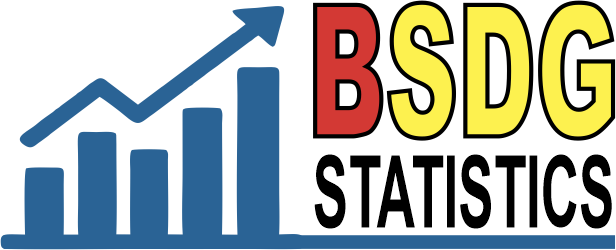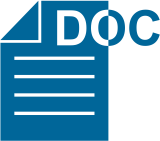THE POTENTIAL AND UTILIZATION OF GEOTHERMAL ENERGY ASSESSMENT FOR DIRECT UTILIZATION IN THE LELES PROSPECT, CIANJUR, WEST JAWA
THE POTENTIAL AND UTILIZATION OF GEOTHERMAL ENERGY ASSESSMENT FOR DIRECT UTILIZATION IN THE LELES PROSPECT, CIANJUR, WEST JAWA
Abstract
This research activity aims to estimate the potential and utilization of geothermal energy for direct use in Prospect Leles, Cianjur Regency, by applying technical instructions on calculating the potential and utilization of geothermal energy for direct use. The Leles prospect has eight heat sources for direct utilization of geothermal energy: five hot springs, one hot water drilled well, and two hot water bathing pools. Two pools are categorized as utilized, with the installed capacity of one hot spring with proven reserves. Meanwhile, the remaining five hot springs are still categorized as measurable resources. The total installed capacity of the two hot spring pools is 38.85 kWt with an annual utilization of 1.23 TJoules per year or ~0.34 GWh per year with an estimated capacity factor of 33.3%. With this capacity, the ratio of installed capacity to proven reserves is still very small, only 1.41%. Meanwhile, the total potential of the Leles Prospect is 3.3 MWt with details of proven reserves of 2,592 kWt and measured resources of 704 kWt. The recommendation for direct use is to increase the utilization installation, either in parallel, a pool can be made for swimming, bathing, and a jacuzzi, and in cascading with aquaculture, such as shrimp or catfish.
Downloads
References
Laporan Survei Rinci Geologi, Geokimia, Gaya Berat dan Audiomagnetotellurik Daerah Panas Bumi Tanggeung-Cibungur Kabupaten Cianjur, Provinsi Jawa Barat. Bandung: Pusat Sumber Daya Mineral Batubara dan Panas Bumi.
Badan Geologi, 2024. Petunjuk Teknis Tata Cara Perhitungan Potensi dan Utilisasi Energi Panas Bumi untuk Pemanfaatan Langsung. Bandung: Badan Geologi.
Beall, S. & Samuels, G., 1971. Use of Warm Water for Heating and Cooling Plant and Animal Enclosures. Oak Ridge National Lab.(ORNL), Oak Ridge, TN (United States).
Direktorat Panas Bumi, 2023. Pengembangan Panas Bumi di Indonesia. Jakarta: Direktorat Panas Bumi.
JICA, 2016. Investigations on Geothermal Direct Use in Indonesia and Proposal of Projects for Policy Making. Japan International Cooperation Agency (JICA).
Lund, J. W. & Toth, A. N., 2021. Direct Utilization of Geothermal Energy 2020 Worldwide Review. Geothermics, 90, 101915.
Nugraha, H. S., Shoedarto, R. M., Sediyono, B., Aries, F. R., Irawan, D. & Perdana, F., 2015. An Update on Thermal Activities as Geothermal Direct Utilization in the Western Part of Java. International Indonesia Geothermal Congress and Exhibition 2015. Jakarta.
Pemanas Air Indonesia., 2019. Tips Mendapatkan Alat Pemanas Air Kolam Renang yang Ideal [Online]. Pemanas Air Indonesia. Available: https://pemanasairindonesia.com/tips-mendapatkan-alat-pemanas-air-kolam-renang-yang-ideal/ [Accessed 15 Juni 2024 2024].
PSDMBP, 2021a. Laporan Evaluasi Daerah Panas Bumi untuk Pemanfaatan Langsung di Wilayah Pulau Jawa Bagian Barat. Bandung.
PSDMBP, 2021b. Laporan Evaluasi Daerah Panas Bumi untuk Pemanfaatan Langsung di Wilayah Pulau Jawa Bagian Timur. Bandung.
PSDMBP, 2022. Laporan Evaluasi Daerah Panas Bumi untuk Pemanfaatan Langsung di Wilayah Pulau Kalimantan Bagian Timur. Bandung.
PSDMBP, 2023. Laporan Evaluasi Daerah Panas Bumi untuk Pemanfaatan Langsung di Wilayah Pulau Sumatera Bagian Utara. Bandung.
Sezar, H. A., 2017. Pre-feasibility Study of Geothermal Direct Use Recreational Centre: a Case Study of Songwe Prospect in Tanzania. Geothermal Training Programme, 28, 561-591.
Copyright (c) 2024 Buletin Sumber Daya Geologi

This work is licensed under a Creative Commons Attribution-NonCommercial-ShareAlike 4.0 International License.
Authors whose manuscripts are published agree to the following terms:
The publication rights of all journal manuscript materials published on the Buletin Sumber Daya Geologi website are held by the editorial board with the knowledge of the author (moral rights remain with the manuscript’s author).
The formal legal provisions for access to digital articles in this electronic journal are subject to the terms of the Creative Commons Attribution-ShareAlike (CC BY-SA) license. This means that Buletin Sumber Daya Geologi has the right to store, convert media/formats, manage in the form of a database, maintain, and publish the article without requesting permission from the author, as long as the author’s name is cited as the copyright holder.
Manuscripts published in both print and electronic formats are open access for educational, research, investigative, and library purposes. Beyond these purposes, the editorial board is not responsible for any violations of copyright law.















